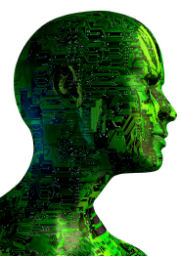Thinking Clearly about
Artificial Intelligence
Forget HAL, Data and little David. The homicidal HAL 9000 computer chasing Keir Dullea's astronaut Bowman in 2001: A Space Odyssey is a favorite image of artificial intelligence gone bad, but it's not the true face of AI in the modern world. Neither is Star Trek's Commander Data, a Pinnochio character desperately seeking emotion. Farthest off-base is Steven Spielberg's AI: The Movie puppet David, a manufactured ten-year-old boy who learns how to love and becomes obsessed with his mother.
Why do we have to call it "AI"?
The term "artificial intelligence" has a musty aftertaste of bearded computer science wonks wrangling chess algorithms on university mainframes. AI has had at least three promising starts -- roughly categorized as expert systems, neural networks and genetic algorithms --and it's facile but somewhat accurate to describe the discipline as the triumph of hope over experience.
We've polled conference audiences, analysts and developers in the field looking for a better term for software that is becoming smarter. Some prefer intelligent systems, others focus on the concept of bots and intelligent agents, and specialists spotlight applications like data mining, voice recognition and collaborative filtering. A few avoid the term altogether as too freighted with the wrong meanings.
We've found no good alternative. We'll stick with artificial intelligence because it envisions the entire range of intelligent systems developments, from today's baby steps in personalization and pattern recognition to glorious dreams of digital consciousness and sentient silicon.
Jack Powers
Artificial intelligence in the everyday is much less ambitious and much more important -- both commercially and culturally -- than the replication of human vices and virtues. After fifty years of AI effort, computers still can't think like people, and that's a good thing. Instead, they think like computers, and as they get more intelligent through new software techniques, faster and cheaper hardware, and the enormous connective power of the Internet, they'll be able to solve problems, manage processes and serve humanity much more effectively than an army of mechanical human wannabees.
AI techniques are found today in thousands of useful applications: smart Internet search engines that read the pages before recommending them to you; ecommerce collaborative filters that know your tastes in books and movies better than you know them yourself; diagnostic tools that analyze MRI images to find tumors and monitor treatments; biomedical informatics systems that understand the human genome and search for new drug therapies; neural networks that control our phone systems and keep service going during disasters; simulation games that generate whole worlds of characters interacting with your guidance; set-top boxes that monitor your TV watching and anticipate your entertainment preferences; data mining algorithms that search for terrorist bank accounts; biometric algorithms that recognize your face, voice and fingerprints
As artificial intelligence moves out of the research labs and into the commercial world, the next generation of digital systems will be smarter, more independent and more powerful than the hand-crafted computer programs that came before. Companies that have clever robots will out-compete those with merely good programmers. Managers who understand the power of intelligent systems will replace those who just know data processing. And people in all walks of life who understand how digital intelligence works will apply AI to new ways of working, playing and living that expand human potential and define a new relationship between people and machines.\\

